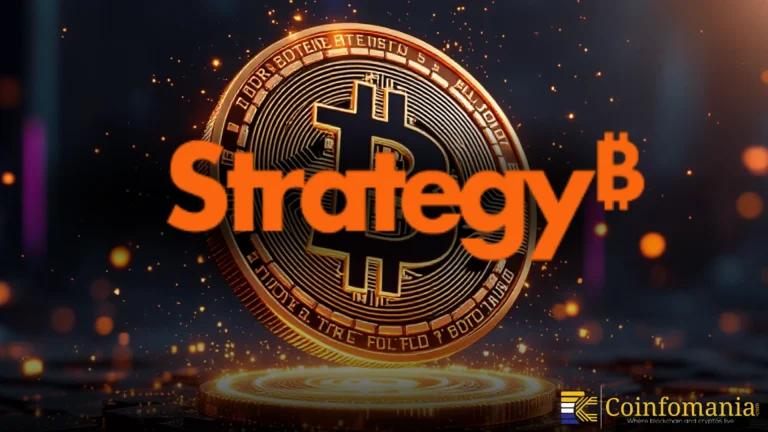BlackSwan’s Vandell Reacts to Crypto Market Dynamics and ETF Impact
BlackSwan’s Vandell shares insights on market shifts, XRP ETF risks, and the true value of crypto beyond price exposure and institutional control.

Quick Take
Summary is AI generated, newsroom reviewed.
Vandell criticizes the bullish market shift driven by a misunderstanding of macro factors.
BlackRock’s XRP ETF is seen as a profit-driven move, lacking true utility for crypto investors.
Vandell warns that ETFs could manipulate markets, denying investors direct exposure to XRP’s potential.
As the crypto market is changing quickly, Vandell (BlackSwan) is apprehensive about the current state of the market and the growing dominance of traditional financial powers like BlackRock. Market commentators had once called for a bear market, but the turn of the unexpected bullish optimism has raised very important questions on the real underlying determinants of this change. Dominated by discussions, a likely approval of an XRP ETF is a topic at the heart of debate, which had somewhat optimistic prospects, but may not deliver the anticipated benefits for the crypto sector.
Market Shifts and Misunderstanding of Macro Factors
The changing states of the crypto market have shifted the opinion of educated “pros” from the predictions of a crash by “pros” who were just about to predict a downturn back into a bullish outlook. Vandell hypothesizes that the fevered reassessments originate from a narrow understanding of broader economic trends and market norms. Traditional financial institutions regularly use market data in their analysis. However, failure to make note of the economic and technological trends that create the models of cryptocurrency markets.
The wave of heightened sentiment (to a certain degree, driven along by BlackRock’s enthusiasm for XRP) sharpens this point. Financial entities may take advantage of market spikes in the short term, but failing to understand the long-term influence of crypto’s decentralized model and utility is a critical mistake. In Vandell’s opinion, how it stacks up in the market separates the crypto from the crowd. Notably, the cutting-edge technology makes it possible for those networks to be decentralized and have a unique value proposition.
BlackRock’s Interest in an XRP ETF: Profit, Not Utility
Recently, there has been a lot of focus on BlackRock’s participation in developing an XRP ETF in the crypto ecosystem. While it seems to signal progress towards crypto adoption, Vandell warns that it is not a true win for the utility of assets such as XRP. A close look at how an XRP ETF would not open XRP to the little man, or make it accessible to an inclusive investment. However, it would aim to empower institutional players to gain more control and achieve maximum returns.
Using an ETF, investors can monitor the asset’s price movement, but do not reap the underlying advantages of holding the actual asset. Ownership of native XRP provides access to its full suite of applications, including remittances, liquidity provision, smart contracts, and staking. Using native XRP, it is possible to enjoy all the advantages of the XRP network. By purchasing an XRP ETF, you miss out on the system’s key benefits. With XRP ETF holders, they only experience price volatility and not access to the utility that imparts value to the native XRP.
Vandell insists here that this is representative of a great transformation of traditional financial institutions’ role in dealing with and relating to crypto. Rather than enabling people to interact with decentralized finance (DeFi), they’re creating a structure that reaps from crypto price fluctuations while denying investors the asset’s full potential.
The Risks of ETF Exposure and Wall Street’s Version of Crypto
If issued, an XRP ETF would trigger important talk about how and whether the crypto market can be manipulated. As Vandell suggests, ETFs are as easily subject to the same subliminal manipulations that describe conventional trading systems. With an ETF, an investor only has indirect exposure to his or her holdings. Using ETFs, the investors only gain access to the asset’s price movement, but never to the asset itself. Since individuals do not own the assets and only gain exposure to price changes, big financial institutions can manipulate markets to their financial agenda, to the cost of the average investor.
According to Vandell, the key issue is that the actual access to XRP forces investors to handle the asset themselves. In this manner, the investors can interact with the XRP practically inside the ecosystem while paying less attention to the price speculation via an ETF. For XRP’s potential, including its usage as remittance and smart contracts, self-custody, and owning the asset directly are necessary. Essentially, ETFs are bare-bones versions of the asset, aimed more for the Wall Street traders rather than for utility from XRP.
The True Value of Crypto Lies Beyond the Price Tag
In the end, the end of Vandell’s responses to the growing attention to crypto ETFs, notably XRP ETF, is a broader concern about the fate of the crypto industry. As BlackRock and other major players look for market exposure, price performance is their main concern, and little attention is paid to the underlying utility of the assets. Direct engagement and asset use are the key to unlocking the real promise of crypto, not the trading of market-driven products such as ETFs.
With the crypto market in flux, investors should appreciate the difference between price-driven participation and direct interlacing of technology’s benefits. Vandell’s viewpoint highlights that the future of crypto has nothing to do with institutions dominating the market and imposing terms of engagement with crypto; instead, it is about enabling individuals with decentralization.
Follow us on Google News
Get the latest crypto insights and updates.
Related Posts

Avalanche Sees Major Breakthrough as Securitize Gains EU Approval for Regulated Trading
Vandit Grover
Author

Strategy Raises Confidence With a Fresh Look at Its Financial Backbone
Vandit Grover
Author

Visa and AquaNow Push Stablecoin Innovation Toward Mainstream Adoption
Vandit Grover
Author